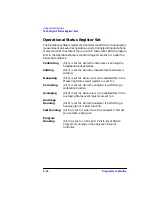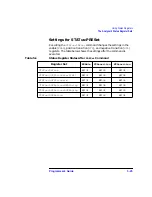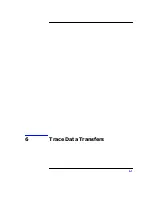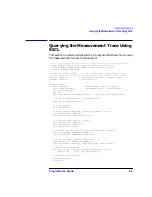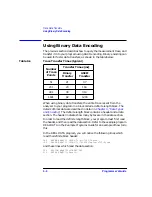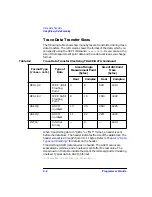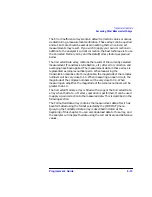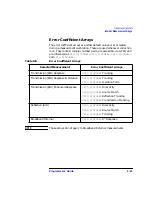
6-10
Programmer’s Guide
Trace Data Transfers
Transferring Data with IBASIC
Transferring Data with IBASIC
If you are using IBASIC, your IBASIC program can avoid the overhead of
using
OUTPUT
and
ENTER
to transfer trace data, and instead use the
analyzer's built-in high-speed subprograms. These built-in subroutines
let you quickly move data between the analyzer's measurement arrays
and your program's data arrays. For example, to read the analyzer's
formatted data array, use the following:
10 DIM Fmt(1:201)
20 INTEGER Chan
30 LOADSUB Read_fdata FROM "XFER:MEM 0,0"
40 Chan=1
50 Read_fdata(Chan,Fmt(*))
Refer to the HP Instrument BASIC User's Handbook for more details.
The table below compares the speed of IBASIC using high-speed transfer
subroutines with that of a fast external controller using the SCPI
TRACE:DATA? CH1FDATA
query.
Table 6-3
High-Speed Trace Transfer Times
Number of Trace Points
Controller Using Binary
TRACE:DATA?
(ms)
IBASIC Using
Read_fdata
(ms)
51
21
7
201
23
10
401
30
13
1601
82
32
Summary of Contents for 8712ES
Page 11: ...1 1 1 Introduction to GPIB Programming ...
Page 27: ...2 1 2 Synchronizing the Analyzer and a Controller ...
Page 36: ...3 1 3 Passing Control ...
Page 39: ...4 1 4 Data Types and Encoding ...
Page 46: ...5 1 5 Using Status Registers ...
Page 71: ...6 1 6 Trace Data Transfers ...
Page 98: ...6 28 Programmer sGuide Trace Data Transfers Internal Measurement Arrays ...
Page 99: ...7 1 7 Using Graphics ...
Page 105: ...8 1 8 Front Panel Keycodes ...
Page 111: ...9 1 9 Introduction to SCPI ...
Page 129: ...10 1 10 Menu Map with SCPI Commands ...
Page 268: ...12 1 12 SCPI Conformance Information ...
Page 290: ...13 1 13 SCPI Error Messages ...



